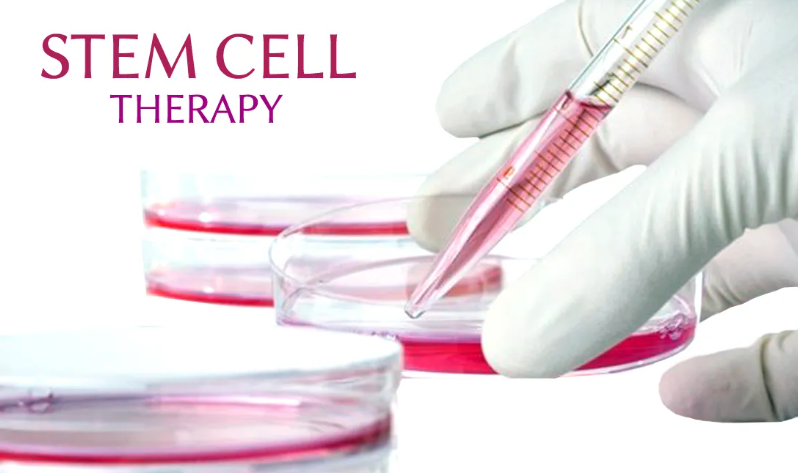Stem Cell Treatment Breakthroughs for Traumatic Brain Injuries

Traumatic brain injuries (TBIs) are severe injuries that impact the brain’s normal function. They result from external forces, such as falls or accidents. These injuries can lead to long-term cognitive and physical disabilities. Traditional treatments often focus on symptom management rather than recovery. However, recent breakthroughs in stem cell research are offering new hope. Stem cell therapies have shown potential in repairing brain damage and improving outcomes for TBI patients. This article explores the latest advancements in stem cell treatments for TBIs and their promising impact on recovery.
Understanding Traumatic Brain Injuries
TBIs occur when an external force causes brain damage. This damage can vary from mild concussions to severe brain damage. Symptoms range from headaches and dizziness to memory loss and behavioral changes. Diagnosis usually involves imaging tests like CT scans or MRIs. Treatment traditionally includes rest, medication, and rehabilitation. Unfortunately, conventional methods may not fully restore brain function. This limitation highlights the need for innovative therapies. Stem cell treatments are emerging as a promising alternative. They offer potential solutions for repairing damaged brain tissue and restoring lost functions.
The Role of Stem Cells in Brain Repair
Stem cells are unique due to their ability to transform into different cell types. They hold the potential to repair and regenerate damaged tissues. In the case of TBIs, stem cells can potentially replace lost or damaged brain cells. The mechanism involves differentiating into neural cells and integrating into the brain’s existing structure. This process can support brain function and promote recovery. Various types of stem cells, including embryonic and adult stem cells, are used in research. These cells help understand how to enhance their effectiveness in treating brain injuries.
Types of Stem Cells Used for TBI Treatment
Different stem cell types are utilized for TBI treatments, each with unique properties. Embryonic stem cells (ESCs) are derived from early-stage embryos. They have the potential to become any cell type, making them highly versatile. Adult stem cells, such as those from bone marrow or fat tissue, are less versatile but easier to obtain. Induced pluripotent stem cells (iPSCs) are adult cells reprogrammed to a stem cell-like state. They combine the benefits of ESCs with the practicality of adult stem cells. Each type has its advantages and challenges in TBI treatment.
Current Research and Clinical Trials
Ongoing research and clinical trials are crucial for advancing stem cell therapies for TBIs. Researchers are exploring various approaches to enhance effectiveness and safety. Clinical trials assess how well stem cell treatments work in real-world scenarios. They evaluate factors such as dosage, delivery methods, and long-term outcomes. Some trials are focusing on the use of neural stem cells to repair brain damage. Others investigate how combining stem cells with other therapies might improve results. These studies are essential for translating experimental treatments into practical solutions for patients.
Benefits of Stem Cell Therapy for TBI
Stem cell therapy offers several potential benefits for TBI patients. One major advantage is the ability to repair damaged brain tissue. Stem cells can differentiate into neural cells, potentially restoring lost functions. They may also reduce inflammation and promote healing in the brain. Additionally, stem cell treatments might enhance cognitive and motor functions, leading to improved quality of life. Patients could experience better recovery outcomes compared to traditional treatments. These benefits highlight the transformative potential of stem cell therapies for TBI patients and their families.
Challenges and Risks of Stem Cell Treatments
Despite their potential, stem cell treatments come with challenges and risks. One concern is the risk of immune rejection, where the body attacks the transplanted cells. Ensuring that stem cells are compatible with the patient’s immune system is crucial. Another challenge is the potential for uncontrolled cell growth, which could lead to tumor formation. Additionally, the long-term effects of stem cell therapy are not yet fully understood. Ongoing research aims to address these challenges and minimize risks. Understanding and mitigating these risks is essential for advancing safe and effective treatments.
Success Stories and Case Studies
Several success stories and case studies highlight the potential of stem cell treatments for TBIs. Patients who have undergone these therapies report improvements in cognitive and physical functions. For example, some individuals have regained abilities they had lost after their injuries. These real-life experiences provide hope for others facing similar challenges. Case studies offer valuable insights into the effectiveness of stem cell treatments. They also help researchers refine techniques and understand how to optimize outcomes. These success stories underscore the promising future of stem cell therapies for TBI patients.
The Future of Stem Cell Therapy for TBI
The future of stem cell therapy for TBI looks promising with ongoing research and technological advancements. Innovations in stem cell research are expected to improve treatment effectiveness and safety. Future therapies may offer more personalized approaches, tailoring treatments to individual patient needs. Advances in delivery methods and cell processing could enhance outcomes. Additionally, combining stem cell therapies with other treatments might provide even better results. As research progresses, we can expect to see more breakthroughs that will transform the landscape of TBI treatment and recovery.
Conclusion
Stem cell treatments represent a significant breakthrough in the management of traumatic brain injuries. While challenges and risks remain, the potential benefits are substantial. Stem cells offer a novel approach to repairing damaged brain tissue and improving patient outcomes. Ongoing research and clinical trials are essential for advancing these therapies and ensuring their safety and effectiveness. For patients and families affected by TBIs, stem cell therapy provides hope for recovery and a better quality of life. To learn more about these exciting developments, visit us online.

